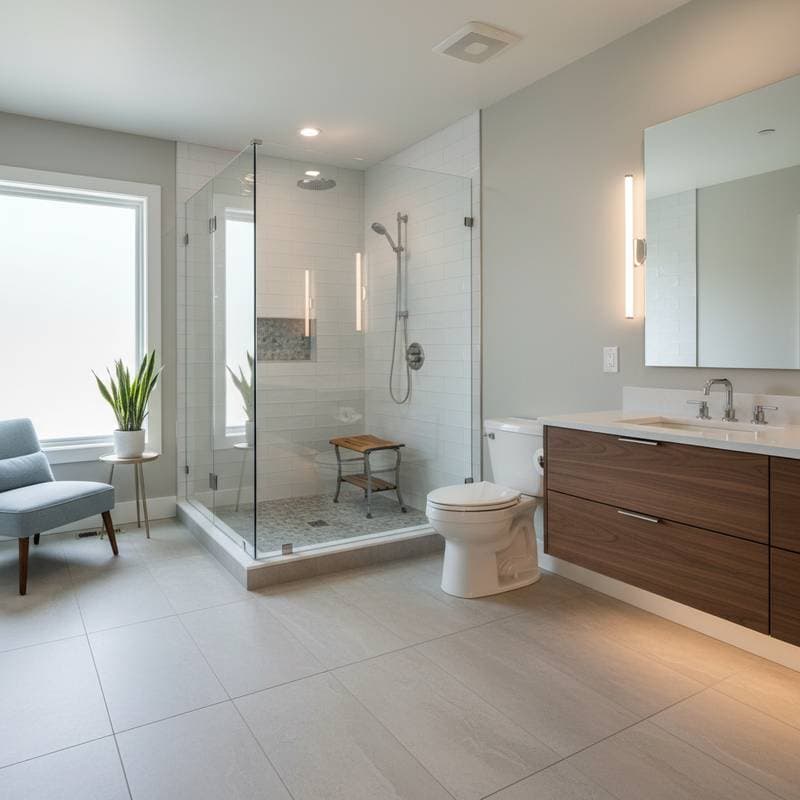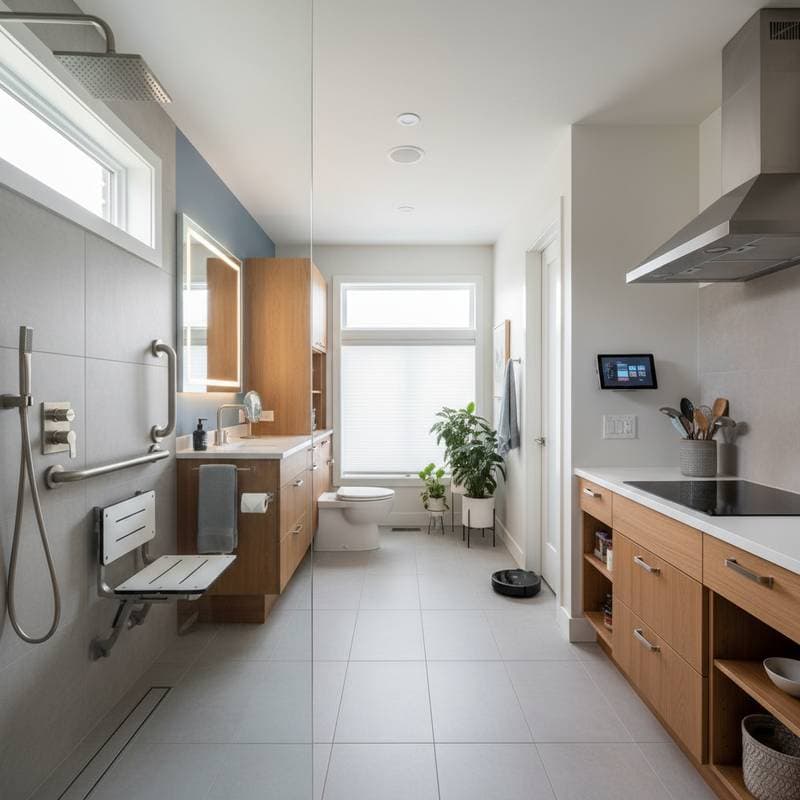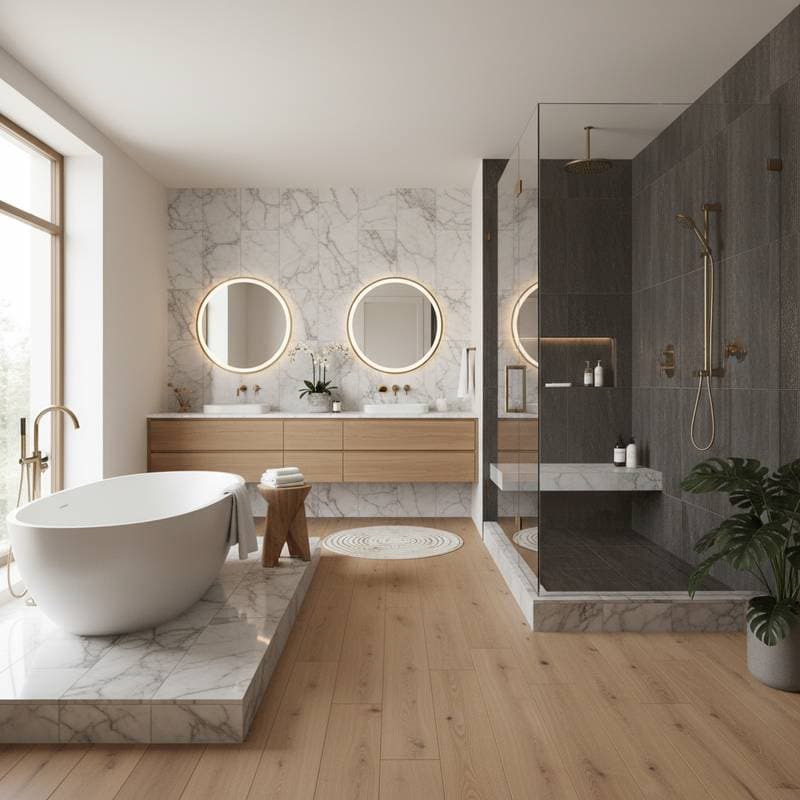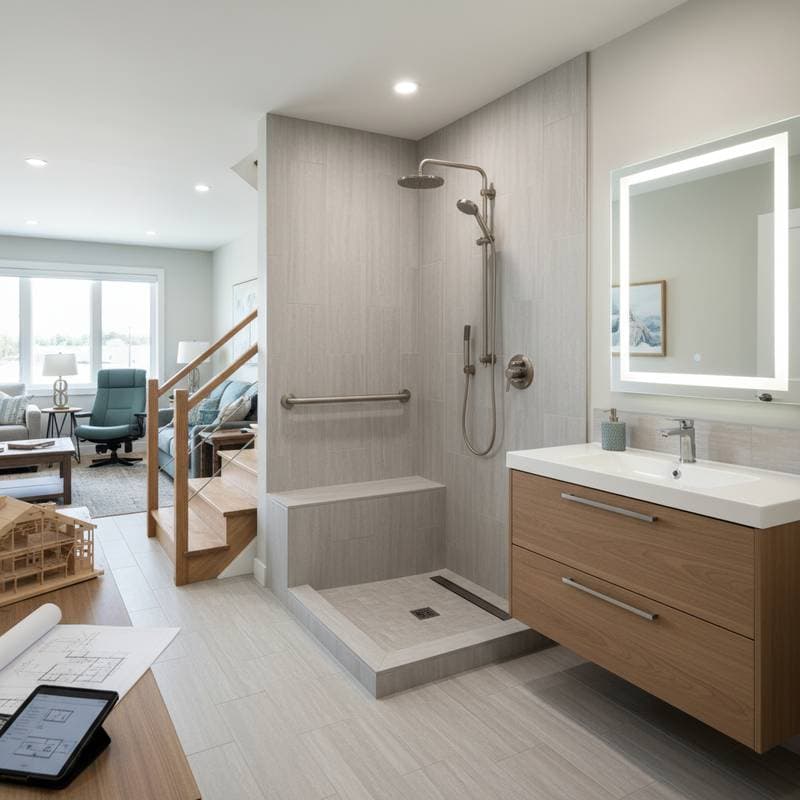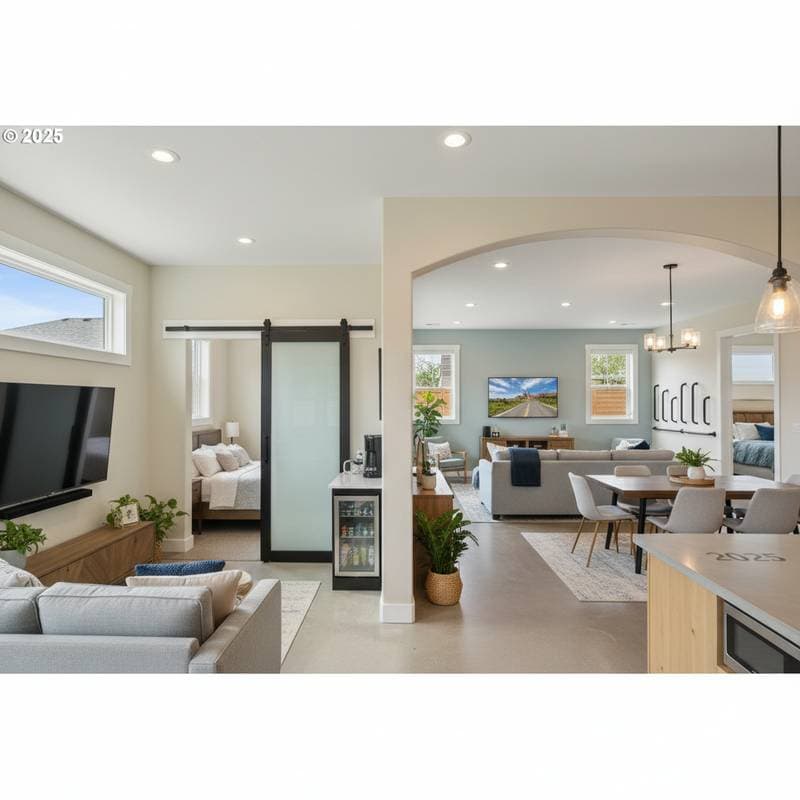Universal Design: Building a Home for Lifelong Independence
Renovating a home using universal design principles ensures comfort and safety across all life stages. This method eliminates physical barriers, enhances accessibility, and fosters an adaptable environment that maintains both beauty and utility.
Universal design promotes intentional planning, making every area intuitive to navigate. Individuals recovering from injuries, parents with young children, or those aging in place all benefit from these considerations.
Understanding Universal Design
Universal design focuses on spaces usable by people of all abilities and ages. It extends beyond basic accessibility requirements by integrating safety elements with appealing aesthetics. The primary aims include promoting independence, ensuring comfort, and providing flexibility.
Fundamental principles encompass simplicity in operation, straightforward movement paths, minimal physical exertion, and versatile adaptations. Examples include broader doorways, open floor plans, improved illumination, and fixtures suitable for diverse users.
Essential Elements for an Adaptable Home
Remodeling with universal design requires balancing practicality and visual appeal. Every decision should simplify routine activities while preserving the home's character and inviting atmosphere.
The following sections outline key areas to address during a renovation project.
1. Accessible Entrances and Pathways
Entryways serve as the gateway to the home, so they demand attention for smooth transitions. Eliminating steps and thresholds prevents trips and eases movement for wheelchairs or walkers.
- No-Step Entries: Install ramps or level landings at doors to accommodate varying mobility levels.
- Wide Doorways: Expand openings to at least 32 inches for clear passage with assistive devices.
- Non-Slip Surfaces: Choose durable, textured flooring that resists moisture and provides stable footing.
- Clear Circulation Paths: Maintain at least 36 inches of width in hallways to allow easy navigation.
These modifications create welcoming arrivals that integrate seamlessly with the home's exterior and interior design.
2. Kitchens Designed for All Users
Kitchens represent a hub of activity, necessitating designs that support reaching, mobility, and coordination for everyone.
- Varied Counter Heights: Incorporate surfaces at 34 inches and 28 inches to suit standing and seated preparation.
- Pull-Out Shelves and Drawers: These elements minimize stretching or bending to access items.
- Targeted Task Lighting: Install adjustable lights beneath cabinets to illuminate work areas precisely.
- Accessible Appliances: Position wall ovens at mid-height and select front-loading washers with easy-reach controls.
A thoughtfully designed kitchen enhances efficiency while contributing to the overall harmony of the space.
3. Bathrooms for Safety and Comfort
Bathrooms pose unique risks due to water and confined spaces, making universal adaptations essential for preventing accidents.
- Curbless Showers: Create open, level-entry showers with built-in benches for seated bathing.
- Grab Bars: Strategically place reinforced bars near toilets and showers for reliable support.
- Lever-Handled Fixtures: Opt for single-lever faucets and doors that require less grip strength.
- Anti-Scald Valves: Install devices that limit water temperature to avoid burns.
These features promote hygiene and relaxation, blending functionality with serene aesthetics.
4. Lighting, Color Choices, and Enhanced Visibility
Effective lighting schemes bolster safety and influence well-being. Layer different types to achieve even illumination throughout the home.
- Layered Systems: Combine overhead lights, wall-mounted fixtures, and under-cabinet options to eliminate dark spots.
- Motion-Activated Sensors: Place these in corridors and restrooms to activate lights automatically during low-visibility periods.
- High-Contrast Colors: Select trim, flooring, and counter edges in contrasting hues to outline boundaries clearly.
LED bulbs in warm white tones deliver bright visibility without harshness. Dimmable switches allow customization for different times of day, supporting both energy efficiency and user preferences.
5. Bedrooms and Flooring for Restful Living
Bedrooms provide spaces for rest and recovery, so flooring and layout choices significantly impact daily comfort.
- Firm, Low-Pile Carpeting: Use materials that offer cushioning yet allow smooth rolling for mobility aids.
- Adjustable Bed Positions: Incorporate frames that raise or lower to facilitate getting in and out.
- Closet Adaptations: Install pull-down rods and shallow shelves for easier clothing access.
- Even Floor Transitions: Ensure seamless connections between rooms to avoid uneven surfaces.
These adjustments foster restorative environments that feel both cozy and practical.
6. Integrating Smart Technology
Contemporary technology streamlines tasks and elevates security in universal design homes.
- Voice-Control Interfaces: Program lights, heating systems, and door locks to respond to spoken instructions.
- Smart Doorbells with Cameras: Monitor visitors remotely, ideal for those with reduced mobility.
- Automated Window Coverings: Use motorized blinds to manage sunlight and privacy with minimal effort.
Select compatible, user-friendly systems that permit future upgrades and maintain strong network connections.
Steps to Plan Your Renovation
Start any remodel by assessing current challenges in mobility or daily routines. Collaborate with a contractor experienced in universal design, who can handle structural alterations, precise fixture installations, and adherence to building codes.
Expenses depend on project scope. Basic enhancements, such as installing lever handles or grab bars, offer cost-effective options for self-directed work. Extensive modifications, like reconfiguring entrances or bathrooms, benefit from professional input to achieve correct gradients, waterproofing, and regulatory compliance.
Consult local resources for funding assistance, including grants for accessibility improvements.
Embracing the Benefits of Your Renovated Space
Universal design renovations represent a commitment to sustained independence, security, and tranquility. The enhancements implemented now enable decades of comfortable living with fewer modifications required later.
Daily activities become less demanding, alleviating potential frustrations. The home evolves as a nurturing ally, delivering aesthetic pleasure and operational ease through every phase of life.



